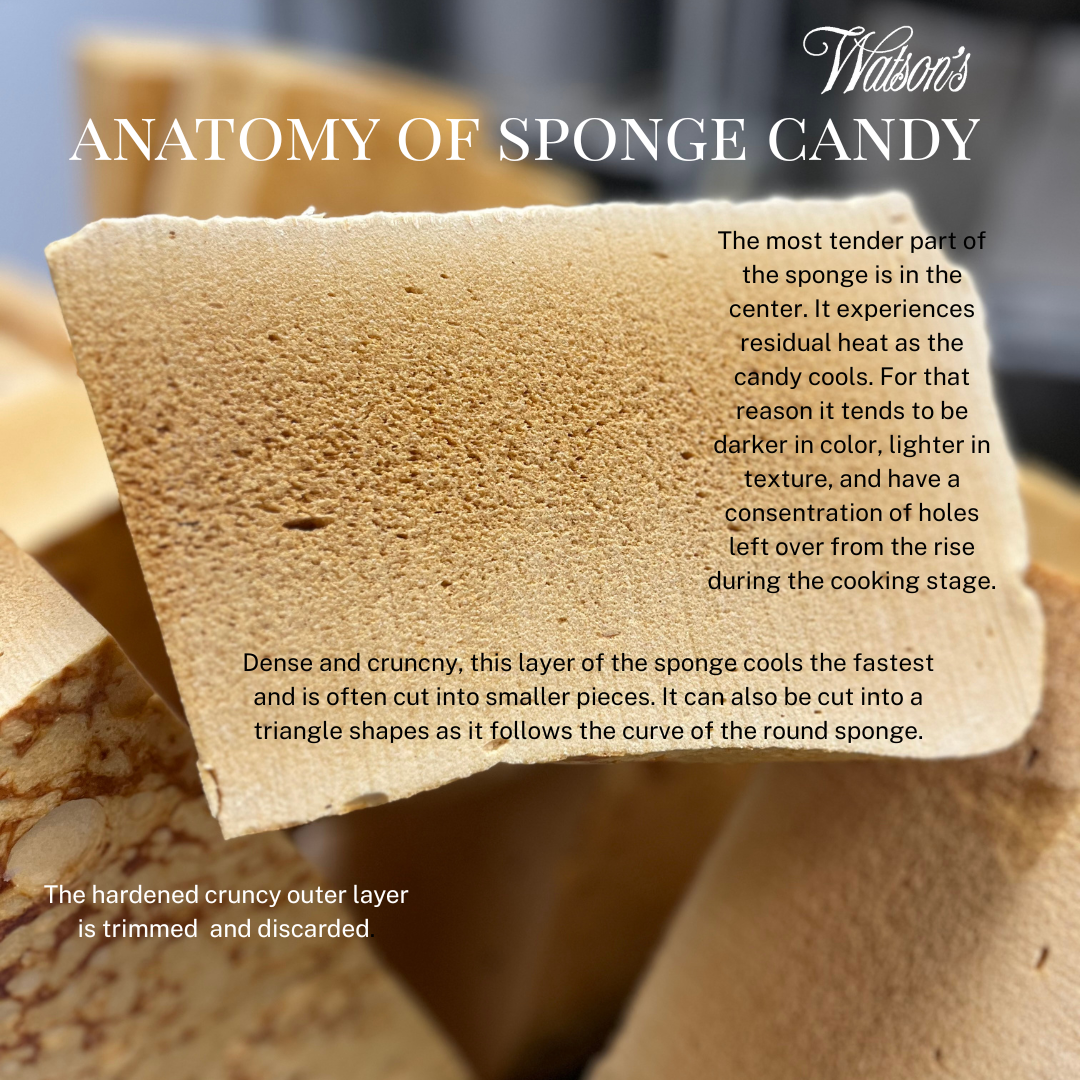
Have you ever wondered about the mysterious anatomy of sponge candy? How does it transform from that giant "flop" into crunchy little squares that are tender and delicious? Here's a little bit more about Buffalo's favorite confection.
The Hardened Outer Layer: A Sweet Sacrifice
Picture this: the hardened outer layer of sponge candy is like the crust of a baked loaf of bread. It's the sacrificial part that gets trimmed and discarded to reveal the tenderness within.
Dense and Crunchy: The Cool Kid on the Block
As the candy cools, the outer layer becomes dense and crunchy, creating a contrast to the tender center. This layer cools the fastest and is often cut into smaller pieces. It also often ends up cut into a triange shape becasue of the curvature of the round sponge shape.
The Tender Center: Where the Magic Happens
The most tender part of the sponge candy is nestled in the center. This part experiences residual heat as the candy cools, resulting in a darker color, lighter texture, and a concentration of holes from the cooking process.
So, the next time you bite into a piece of sponge candy, take a moment to appreciate its intricate anatomy. From the hardened outer layer to the tender center, each part plays a role in creating the perfect balance of sweetness and crunch. It's a true masterpiece of confectionery craftsmanship!

Comments (0)
Back to News